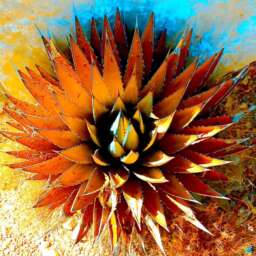I usually don’t give 100% to what I watch because how could anything be perfect? I’ve handed them out from time to time, but not often. However, “Omnivore,” narrated by the famous chef René Redzepi of Noma, is another animal. It’s the perfect dish, no matter how you serve it.
It’s an eight-episode series, with Redzepi telling us almost everything he knows about specific ingredients and how they shape our lives and have changed this planet.
Because of how this series is produced, I’d give it 200% if allowed.
An omnivore is an animal that can eat and survive on both plant and animal matter. Obtaining energy and nutrients from plant and animal matter, omnivores digest carbohydrates, protein, fat, and fiber and metabolize the nutrients and energy of the sources absorbed. This series covers how this obtains to us.
Chile, salt, tuna, pigs, bananas, rice, coffee, and corn each get their own episode. You may think you’d never have an interest in them outside of enjoying them on your tongue, but you’d be wrong. Each episode dives deeply into what the ingredient offers and how it got from the farm to your lips. You’ll enjoy the lesson.
Redzepi’s narration is sensational, the cinematography absorbing, and the people interviewed are so learned you wait on pins and needles to hear what they’ll say next. There’s a theme in the show, which is that climate change is making it difficult to feed the world’s population. So, fathers pass their knowledge down to their sons, and thriving farms assist one another in achieving the goal of giving love to this planet… and in feeding us. “We are what we eat.” Redzepi reminds us. “This is the oldest and truest recipe that I know of.” As our narrator educates, the screen is filled with gorgeous scenery. Lightening, mountains, fields, the sun, fruit, spices and the items he is examining for us are stunning. The background music fits with each episode and ingredient we’re on, too.
It’s somewhere between Chile’s (Episode 1) and Banana’s (Episode 4) that I wanted to run into the kitchen and eat everything in sight. You will likely want to do the same or start cooking by looking at how beautifully the food is presented. What is being said in the chef’s commentary is as fascinating as a narrative film, if not more so.
Each episode covers foods and people in different parts of the globe and how those people deal with what nature has handed them. You discover quite a lot about the good and the bad of farming. Luckily for us, there are people out there who find love in agriculture. That said, you’ll find it entertaining to watch people eat the food being discussed in this show and the different ways they cook and serve it.
Discovering the beginning stages of Coffee and the Banana will interest you and make this your new binge-worthy show. How did we come to know coffee? A goat herder stumbled upon by knowing his flock really well. He watched them eat the fruit that holds the bean we grind up to make our morning brew. The goats became restless and more animated than usual. Their behavior made the goat herder realize he had something. Take a look around at the many coffee shops. Did he have something? When you drink coffee, dopamine floods the brain, our hearts beat faster, and our central nervous system awakens. It’s a mind, body and mood-altering substance. These facts come early in the episode. There is much more to learn beyond this.
We’ve come to know the Banana by accident, as well. This episode blew my mind in several ways. One was finding out that we eat primarily only one type of Banana. It’s called the Cavendish. However, you’ll be surprised to hear that there are 1,500 different varieties of them, the most popular of all fruits. In the show, we meet a farmer named Vinod, who has 520 varieties. He tells us that people not taking care of this sweet, delicious fruit means they will be gone soon. He and his son, who has a master’s degree in engineering, decided to help feed the world… to act before no bananas were left to celebrate. Their farm has the rarest and largest banana collection in the world. It’s awe-inspiring to find what he’s willing to go through to make sure they survive. Thank you, Vinod. The history of how the U.S. first got the Banana is unexpected. Businessman Minor Cooper Keith was building a railroad in Costa Rica and planted the fruit along the tracks. In a few years, they were in every kitchen in America.
Sadly, there’s now a fungus threatening the world’s supply to watch out for. It can wipe out whole plantations and can ruin the soil for years. You may think that’s about it on bananas, but there’s still more about them in the episode.
Corn was unexpectedly engrossing. Watching this episode, I learned that corn is in almost everything: bourbon, crayons, fiberglass, cork, cigarettes, tires, aspirin, shoe polish, cardboard, and more. It also gives us ethanol fuel. Believe it or not, less than ten percent is used for food. Knowing this, can you imagine what life would be without corn? It’s grown in several places, but due to NAFTA (North American Free Trade Agreement), some trouble brewed. Watch the episode to shed some light on a country not happy with the U.S. due to NAFTA.
That’s just a piece of this series. Each episode is simply mesmerizing. Remember, we all have a connection to food. Watch this series, now on AppleTV+, to deliberate about what that connection may be for you. Our lovely narrator will help you out with that.
I’ll be honest, you won’t avoid the point behind why this show was created. That seems to be to inform us that we can’t eat if there is no food. We are all responsible for making sure this planet can nourish us. That starts with the farms, taking care of the farmers, and caring for our land. I’m so happy that I was turned onto this show. I hope another eight shows are coming and I hope, no, I know that you will feel the same way.
OMNIVORE
Creators: Cary Joji Fukunaga, Matt Goulding, René Redzepi
Starring: René Redzepi
Genre: Documentary
Distributed by: Apple TV+
*Eight-Episode Show
%















What's your take?
Comments